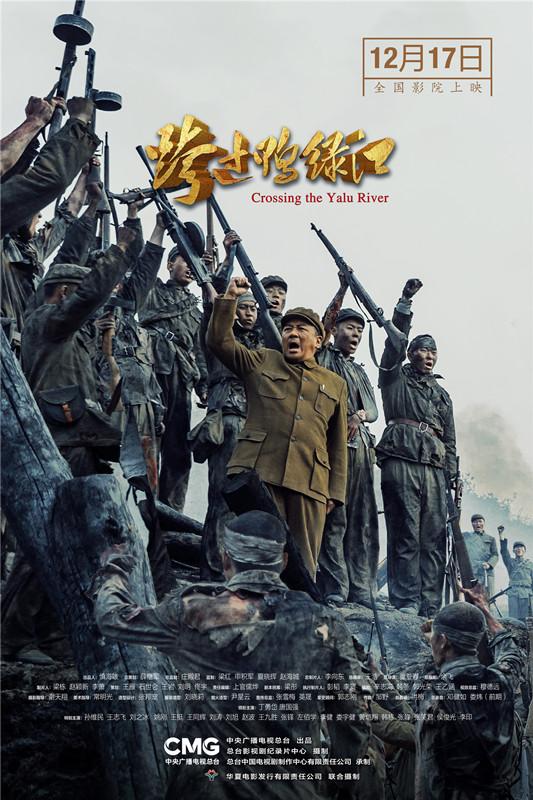敦煌莫高窟
Unit 4(Ⅴideo Script)
(Learn to spread China and Chinese cuIture in EngIish)
Dunhuang Mogao Grottoes
Cultural heritage,tangible or intangible, is the legacy inherited from past generations, preserved in the present and passed down for the benefit of future generations. China is endowed with rich cultural legacies by its long history.
However, modernization, globalization, and natural disasters have posed various threats to the existence of some unique and irreplaceable legacies. Fortunately,the Chinese governments at all levels, as well as many people with noble ideals,have worked hard to encourage the identification, preservation, and promotion of both tangible and intangible cultural heritage.
Dunhuang, an oasis(绿洲) surrounded by desert in Northwest China, is more than the name of a faraway city in Gansu Province. Boasting grottoes that contain splendid artworks, this area testified to the dialogue and interaction between civilizations along the Silk Road dating back thousands of years. Dunhuang Mogao Grottoes, also referred to as the “Caves of the Thousand Buddhas,” are the world’s largest and longest-used treasure house of Buddhist art. With 492 well-preserved cells and cave sanctuaries(殿堂), Mogao Grottoes house about 45,000 square meters of murals (壁画)and more than 2,000 painted sculptures. Dunhuang’s cave art and manuscripts found in the Library Cave (藏经洞) are precious resources to study ancient China and Central Asian history. The caving of the Mogao Grottoes began in 366 AD and continued for about 1,000 years. In more recent centuries, it has suffered from wind and sand erosion coupled with man-made destruction. Many artists and scholars in the early 20th century became concerned about the increasingly vulnerable(脆弱的) state of the caves. Chang Shuhong (1904-1994) was among them.
Although this prominent artist had already made his fame in France, he gave up the comfortable life and a bright art career there, and arrived at Dunhuang in 1943. For decades thereafter, Chang Shuhong devoted himself whole-heartedly to the preservation and study of Dunhuang’s treasures. In 1944 he set up the Dunhuang Art Institute, now Dunhuang Academy. He worked on restoring murals and painted sculptures that had been obscured(模糊) and discolored after centuries of decay. He went hither and thither to retrieve scattered Dunhuang relics from collectors at home and abroad. Chang Shuhong recreated many of the murals, a tough challenge given the extremely harsh conditions at Dunhuang and a lack of funding during wartime. Despite numerous difficulties, he remained committed to its preservation. Even when his first wife and some team members left Dunhuang, he stayed on and persevered.
Chang Shuhong was not alone in pursuing a passion for Dunhuang art. His daughter, Chang Shana (1931-) , would come to follow in his footsteps in preserving and promoting Dunhuang’s art and culture. The French-born Chang Shana fell in love with the grottoes soon after her first visit to Dunhuang at age 12. Under her father’s guidance over successive visits, she copied Dunhuang murals and studied Dunhuang art to learn how differing mural styles had evolved. As she became more knowledgeable, Chang Shana made facsimiles(摹本) of the murals and she painstakingly categorized the sophisticated, elaborate patterns on the cave walls. The images later inspired her while she was designing the ceiling of the Banquet Hall in the Great Hall of the People (人民大会堂). Perfectly infusing the Dunhuang legacy into modern art, she has earned wide recognition from experts. In addition, she has helped integrate Dunhuang art into people’s everyday lives, making the themes more recognizable by incorporating the patterns and images on decorative plates, scarves and clothing. For Chang Shana, Dunhuang has constituted an inseparable part of her life, and her father’s words have been engraved(铭刻) in her heart: “Shana, don’t forget you’re from Dunhuang. It’s time to raise the profile of Dunhuang to a higher level.” The accumulated effort of several generations of outstanding scholars has made significant progress in grotto preservation, especially the launch of the “Digital Dunhuang” project. It is the largest preservation program in Dunhuang history and also shows a new cultural relics protection philosophy. By integrating high-definition images, videos, 3D data and other aspects into a digital repository(库), it provides a way for the world to enthusiastically explore the caves by means of the Internet. Led by the spirit of dedication and innovation passed down from generations, Dunhuang scholars and artists are now working together to restore Dunhuang’s former glory as a jewel on the Silk Road.
敦煌莫高窟
文化遗产,无论是有形的还是无形的,都是从祖先那里继承下来、保存至今并为造福子孙后代而传承下来的遗产。中国历史悠久,文化底蕴深厚。然而,现代化、全球化和自然灾害对一些独特和不可替代的遗产构成了各种威胁。幸运的是,中国各级政府以及许多有识之士都在竭尽全力识别、保护和推广物质和非物质的文化遗产。
在中国西北部有一个被沙漠环绕的绿洲,它就是敦煌。敦煌不仅仅是甘肃省一个遥远城市的名字,更是以其拥有的精美的石窟艺术品而著称。这些石窟艺术有力地见证了丝绸之路沿线数千年来文明之间的对话与互动。敦煌莫高窟又称“千佛洞”,是世界上最大、使用时间最长久的佛教艺术宝库。莫高窟有492个保存完好的石窟和洞穴保护区,拥有约45000平方米的壁画和2000多个彩塑。敦煌石窟艺术与藏经洞手稿是研究中国古代和中亚历史的宝贵资源。莫高窟的雕凿始于公元366年,持续了大约1000年。近几个世纪来,它不断遭到风沙侵蚀和偶尔的人为破坏。20世纪初,许多艺术家和学者开始关注洞穴日益脆弱的状况。常书红(1904-1994)就是其中之一。
虽然这位杰出的艺术家已经在法国功成名就,但他放弃了那里舒适的生活和光明的艺术生涯,于1943年来到敦煌。此后几十年,常书红全身心地致力于敦煌宝藏的保护和研究。1944年,他成立了敦煌艺术学院,即现在的敦煌学院。他致力于修复壁画和彩塑,这些壁画和彩塑在几个世纪的腐烂之后已经变得模糊和褪色。他四处奔走,从国内外收藏家那里取回散落的敦煌文物。常书红重新修复了许多壁画,考虑到敦煌极端恶劣的条件和战争时期资金的缺乏,这是一个相当严峻的挑战。尽管困难重重,他仍然致力于保护工作。即使当他的第一任妻子和一些团队成员离开敦煌时,他仍然坚持下来。对敦煌艺术充满热情的不仅仅是常书红。他的女儿常珊娜(1931—)愿意追随他的脚步,保护和推广敦煌的艺术和文化。
出生于法国的常莎娜在12岁第一次访问敦煌后不久就爱上了石窟。在之后的数次到访中,在父亲的多次指导下,她开始复制敦煌壁画,并研究敦煌艺术,以了解不同的壁画风格的演变过程。随着她的知识越来越渊博,常莎娜制作了壁画的复制品,并煞费苦心地将洞穴墙壁上复杂而精致的图案分类。后来,当她在设计人民大会堂宴会厅的天花板时,其创作灵感正是受到了这些图片的启发。她将敦煌遗产完美地融入现代艺术,赢得了专家的广泛认可。此外,她还将敦煌艺术融入到人们的日常生活中。她将敦煌艺术与装饰板、围巾和衣服上的图案和形像有机结合在一起,而使敦煌艺术主题更为人知。对常莎娜来说,敦煌已经成为她生活中不可分割的一部分,父亲的话时刻铭记在心:“莎娜,别忘了你是敦煌人。是时候把敦煌的形象提升到一个更高的水平了。”
几代杰出学者的共同努力,使石窟保护工作取得了重大进展,尤其是“数字敦煌”工程的启动。这是敦煌历史上规模最大的文物保护项目,也是一种新的文物保护理念。通过将高清图像、视频、3D数据和其他方面收集到数据存储在数据库中,它为世界提供了一种通过互联网热情探索洞窟的方式。在代代相传的奉献精神和创新精神的引领下,敦煌学者和艺术家们正在共同努力,恢复敦煌作为丝绸之路上一颗明珠的昔日辉煌。
声明:本材料为教学资料,取材于季佩英主编《新探索研究生英语•读写教程•基础级》,由外语教学与研究出版社出版。如有侵权,联系删除。











